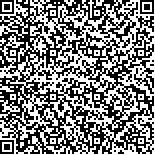下载中心
优秀审稿专家
优秀论文
相关链接
摘要

二向反射分布函数包含地表反射的方向性特征信息。研究二向反射分布函数BRDF(Bidirectional Reflectance Distribution Function)形状对植被结构参数的敏感性,有助于理解植被的二向性反射规律,进而反演植被参数。本文耦合双冠层反射率模型和核驱动的罗斯厚核-李氏稀疏互易核模型,利用EFAST全局敏感性分析方法,以各向异性平整指数为BRDF形状变化的衡量指标,研究了不同天空光比例(SKYL)下,各向异性平整指数AFX对植被参数敏感度的变化,以及SKYL=0.1时AFX的敏感性。结果表明:(1)在红波段,上、下层叶面积指数、上层叶绿素含量,以及上层叶倾角分布是AFX的敏感参数,在近红外波段,上、下层叶面积指数LAI是AFX的敏感参数。(2)冠层尺度上的参数敏感度总体大于叶片尺度。(3)晴天时(SKYL=0.1),红波段主敏感度较大的参数分别是上层LAI、上层叶倾角分布和下层叶片结构参数,近红外波段主敏感度较大的参数主要是上、下层LAI。
Bidirectional Reflectance Distribution Function (BRDF) contains directional information on surface reflectance and provides important orientation information in calculating the surface time-space variable elements. The analysis of the sensitivity of BRDF shapes to vegetation structure parameters contributes to understanding the laws of vegetation bidirectional reflectance and increasing the accuracy in inversing vegetation parameters. Numerous scholars have investigated different BRDF models to determine the relationship between vegetation structure parameters and bidirectional reflectance distribution effects of the vegetation surface. Among these models, the two-layer canopy reflectance model (ACRM model) and kernel-driven model are generally accepted as physical and semiempirical models, respectively.
This study explores the sensitivity of BRDF shapes to vegetation structure parameters by coupling the ACRM model and kernel-driven Ross-Thick/Li-Sparse-Reciprocal model (RTLSR model). The adopted sensitivity analysis method is the extended Fourier amplitude sensitivity test, one of the global sensitivity analysis methods. The Anisotropic Flat indeX (AFX) is employed as the metric for BRDF shapes to explore the sensitivity change in AFX to vegetation parameters under the condition of different SKY Light ratios (SKYL) and sensitivity with SKYL=0.1. From these variables, this study explores the sensitivity parameters with SKYL=0.1. Then, the relationship between the main sensitivity parameters and AFX is analyzed.
Overall, AFX can indicate the change in BRDF shapes. The kernel-driven RTLSR model can fit the data produced by the ACRM model well. Results of the analysis of sensitivity indicate that the change in sky light results in different degrees of sensitivity. Given the influence of sky light, parameter sensitivity at the canopy scale is larger than that at the leaf scale. Under sunny conditions (SKYL=0.1), the total order sensitivity index of the upper Leaf Area Index (LAI) is strongest in the red band, and lower LAI is observed in the near-infrared band. The first-order sensitivity indices of the upper LAI, upper leaf angle distribution, and lower leaf structure parameters are stronger in the red band. Meanwhile, the first-order sensitivity indices of the upper and lower LAI are stronger in the near-infrared band.
AFX plays an important role in increasing inversion accuracy. The index is significant in understanding the relationship between AFX and the surface-covering physical parameters for the inversion of the parameters. This study analyzed the sensitivity of AFX to vegetation structure parameters. The results will help researchers understand the effects of changes in vegetation parameters on BRDF shapes.

